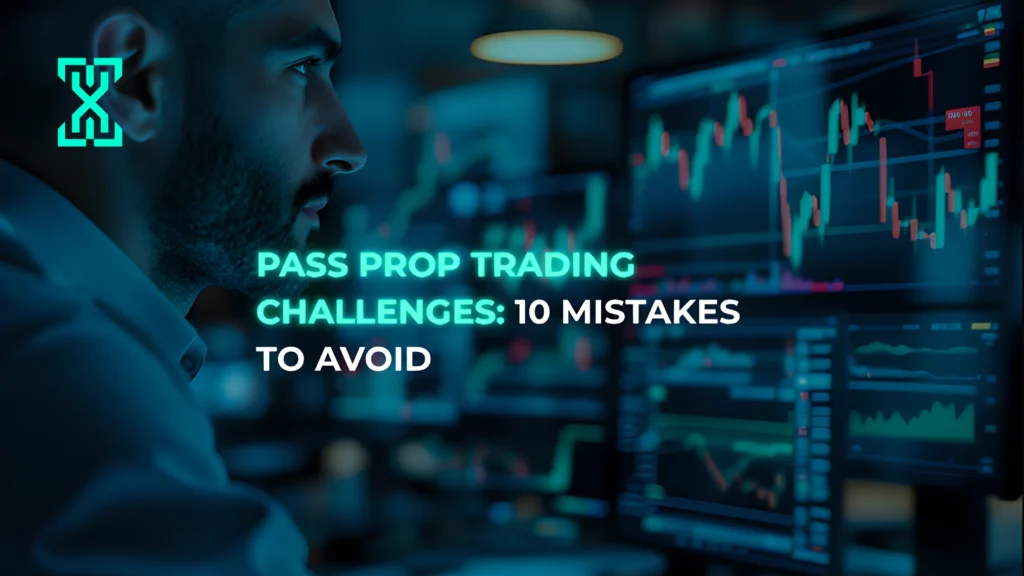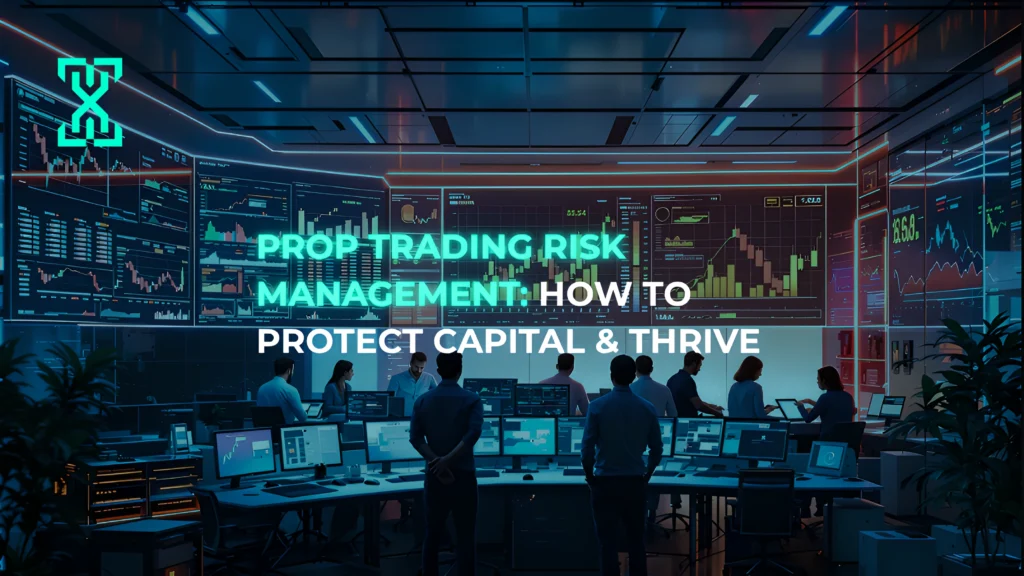Trade Less, Earn More: Prop Trading Smarter, Not Harder

Do you feel like you have to trade every day just to stay in the game or worse, to prove yourself to your prop firm? It’s a common but risky assumption. In prop trading, the mantra should be: trade smarter, not more often. Overtrading driven by FOMO, pressure to hit targets, or boredom can drain capital, lead to burnout, and cause you to fail despite having a solid strategy.
In this guide, we’ll dive into why not trading every single day can enhance your prop trading success. We’ll explore how focusing on high-quality setups, setting trade limits, leveraging a disciplined routine, and respecting prop firm rules can help you protect your account and performance. You’ll discover psychological benefits, journaling techniques, and real-world examples from funded traders who thrive by sitting out until the right moment. Expect actionable advice, insights you won’t find everywhere, and visual concepts to help cement these ideas. Ready to improve your trading rhythm? Let’s begin.
The Trap of Daily Trading
Trading every day often feels like the path to mastery but in prop trading, it’s more likely the road to ruin. Overtrading stems from emotional triggers: FOMO, revenge trading, and pressure to meet performance targets. Prop firms often include trading caps or daily loss limits. Overtrading can rapidly exceed these limits, leading to account termination even when a trader knows their strategy well.
For instance, E8 Markets warns that “overtrading to hit targets fast” leads to poor setups, emotional trades, and a higher chance to hit drawdown thresholds. Meanwhile, OANDA reminds traders: “Set a daily or weekly transaction limit to stop overtrading.”
Unique insight: Trust your edge, not your activity. If your edge only appears in 20% of trading days, you’re better off sitting out 80% of them than entering subpar setups out of habit. That approach not only conserves capital – it builds a fitness for high-stakes environments that reward precision.
Quality Over Quantity
In branded prop trading, as one writer puts it, “skilled funded traders don’t trade every day. They wait for right setups and trade with precision.” This aligns with the 80/20 principle, 80% of results often come from 20% of trades.
Defining high-probability setups means knowing exactly what your trade needs to include, whether it’s divergence, a candlestick pattern, or a macro trigger – before placing any trade. That focus transforms trading from guesswork into strategic precision.
Unique perspective: many traders fear staying idle, but note: being inactive is a sign of control, not failure. It’s a data-informed choice that says: I’m letting the market’s tape lead me, not my urges.
Smart Trade Frequency
Set your boundaries: for example, limit to 2–3 trades per day or even 10 per week. Several prop challenge veterans advocate this: “Set a max number of trades per day (2 or 3 is often enough).”
Equally powerful is learning when not to trade. If market conditions don’t align, or your mindset isn’t sharp, step back. Eleonex refers to mindfulness and avoiding trades that are just to pass time.
Unique tip: Build a ‘sit-out calendar’ for your trading week (e.g., no trades on Fridays or prior to major economic data) to reduce noise and enhance clarity. Test over time and adjust your zones for high-alert days versus low-conviction ones.
Psychological Benefits of Not Trading Every Day
Avoiding daily trading helps shield you from burnout and fatigue, common failures in prop challenges. It also enhances your focus: each trade feels intentional, not compulsive.
Mental advantage: This gap allows time to reflect, reset, and approach the next trading session with fresh perspective. It resets emotional baseline, lowers stress, and reduces mechanical mistakes.
Building a Consistent, Simple Prop Trading Strategy
Start with a clearly defined strategy. Jot down trade criteria e.g., “enter only when RSI divergence aligns with 1.618 Fibonacci and confirmation candle.” Combine this with a pre-trade checklist: strategy alignment, risk check, news calendar check, mental clarity.
Unique perspective: Include a simple five-second mental pause after each signal appears ask, Does this meet every criterion? If not, do not trade.
Using Trading Logs to Reflect and Improve
Keep a trade journal – not just of executed trades, but also of ones you chose not to take. This logs discipline and refines your understanding of quality setups. Eleonex emphasizes that logging helps by preventing blind repetition.
Also note patterns: do certain times of day tempt overtrading? Or do weekends calm your perspective? Use this data to consciously optimize your frequency.
Managing Stress & Emotional Discipline
Breaks and mindfulness matter. When you feel FOMO or fatigue creeping in, stop and breathe. As one blog recommends: set cutoff after loss or time, step away. Recognize that the market will always move – even if you’re not there, so missing a trade isn’t a disaster.
Also, always respect firm-specific rules like no news during high-impact events – so that disciplined inaction becomes part of your competitive edge.
Real-World Examples and Case Studies
A prop-challenge blog reminds us: “you certainly don’t need to trade every day to be successful… skilled traders wait for the right setup. On Reddit, traders recommend setting max daily loss and then stepping away: “If you aren’t making any good trades… give yourself time; price always moves.” Reddit
These consistent truths show that discipline beats hustle every time.
Visual Tools to Aid Smarter Trading
- Infographic – Quality vs Quantity Trade Filter
Flow: signal → checklist → wait vs act.
Alt text: “Infographic showing prop trading decision filter – signal, checklist, sit-out or execute.” - Chart – Journal Insights Dashboard
Bar chart comparing number of trades vs win rate across weeks.
Alt text: “Chart that visualizes correlation between fewer trades and higher win rate in prop trading.” - Mindfulness Timer Concept
A pop-up “cool-down” timer that blocks trading for X minutes after 3 trades/day reached.
Alt text: “Diagram of mindfulness trade cutoff tool for prop traders to avoid overtrading.”
Quick Takeaways
- Trading every day often leads to overtrading, burnout, and failed prop challenges.
- Focus on high-probability setups, not just activity.
- Set trade limits per session/week to enforce discipline.
- Use pre-trade checklists and journal both taken and skipped trades.
- Respect inaction – it’s a strategic decision, not lost opportunity.
- Mindfulness and firm rules compliance nurture performance longevity.
Conclusion
In the world of prop trading, discipline isn’t just staying in your strategy, it’s also knowing when not to trade. Far too many traders fall prey to daily activity, thinking volume equals edge. But true edge comes from waiting for high-probability setups, executing with intention, and stepping away when conditions don’t align.
By setting firm trade limits (daily or weekly), using pre-trade checklists, maintaining a log of both taken and passed trades, and honoring emotions through mindfulness breaks, you not only protect your capital you elevate your professionalism. Skilled traders understand that markets are always present; your fear of missing out shouldn’t mistreat your confidence in your plan.
So take a step back, refine your rhythm, and trade fewer but better trades. Let that selective precision become your signature as a funded, consistent, and respected prop trader. Ready to reset your trading frequency? Give yourself permission to trade smart, and share how your rhythm evolves.
FAQs
- Why should I avoid trading every day in prop trading?
Because quality beats quantity – overtrading can lead to emotional mistakes, violation of firm limits, and burnout. - How many trades a day is ideal for prop trading?
Many experienced traders cap at 2–3 trades per session or 10 per week, focusing only on setups that meet predefined criteria. - What’s the benefit of journaling skipped trades?
Journaling skipped trades reinforces discipline, refines your setup definitions, and builds confidence in your inaction. - How do I stop myself from impulsively entering trades?
Use a pre-trade checklist and a forced pause (e.g. 5-second mental check), and limit trading sessions when emotional fatigue sets in. - Does sitting out count as missed opportunity?
No, it’s a strategic choice. These moments preserve capital, reduce noise, and ensure you only engage with high-conviction setups.
Our Latest Stories
Pass Prop Trading Challenges: 10 Mistakes to Avoid
Passing a prop trading challenge isn’t about flawless strategy; it’s about discipline,…
Prop Trading Risk Management: How to Protect Capital & Thrive
Welcome, online traders! If you’re venturing into prop trading, mastering risk management…
Stay Informed,
Stay Ahead
Bookmark this blog to keep your edge sharp. Whether you're prepping for your first challenge or scaling into a six-figure funded account, our insights are here to help.


